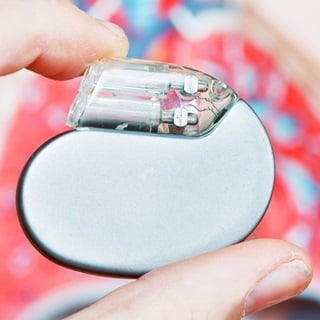Long QT Syndrome

Overview
Long QT syndrome (LQTS) is an abnormality in the heart's electrical system that may cause very fast and potentially dangerous heart rhythms or arrhythmias called torsade de pointes. These arrhythmias may cause sudden loss of consciousness and in some cases, sudden cardiac death.
"Long QT" refers to the abnormal pattern on an electrocardiogram (ECG), the test that records the electrical activity of the heart. The "QT" interval is the ECG measure of the period when the lower chambers of your heart are triggered to contract and then prepare to contract again. These chambers are called ventricles.
When Long QT occurs, the interval is longer than usual, triggering a dangerous, abnormal rhythm.
Our Approach to Long QT Syndrome
Over the past decades, UCSF has helped pioneer breakthroughs in the understanding and treatment of genetic arrhythmias (inherited heart rhythm disorders), such as long QT syndrome. Our team includes electrophysiologists – cardiologists who subspecialize in heart rhythm disorders – as well as experts in general cardiology, genetics and genetic counseling. Working together, we care for patients and their families by offering evaluations and treatments not available elsewhere in the western United States.
We are committed to helping our patients with long QT syndrome live long, healthy lives. Our team can often manage the disorder using medications. Less commonly, patients may require implantable cardioverter defibrillators (ICDs), devices that detect abnormal heartbeats and deliver an electrical shock to reset the heart's normal rhythm. UCSF participated in the clinical trials that led to federal approval of ICDs, and we offer expert care before, during and after insertion of an ICD.
Our patients may also have access to experimental therapies being evaluated in clinical trials.
Awards & recognition
-

Among the top hospitals in the nation
-

One of the nation's best for heart & vascular care
-

Rated high-performing hospital for heart arrhythmia care
Signs & symptoms
Although the exact frequency of LQTS is unknown, it may be as prevalent as one in 5,000 people and may cause 2,000 to 3,000 sudden deaths in children and young adults each year in the United States.
The most common symptom of long QT syndrome (LQTS) is a sudden loss of consciousness or fainting, called syncope. The condition may also cause seizures and in some instances, cardiac arrest and sudden death.
The severity of the condition varies greatly. Some people never experience syncope and others may have frequent episodes that could possibly lead to cardiac arrest and sudden death.
It is important to note that symptoms usually occur without warning and are caused by a very fast heart rhythm called torsade de pointes. Syncope may occur during or just after physical exertion, emotional excitement or sudden auditory arousal, such as from an alarm clock.
Diagnosis
Long QT syndrome (LQTS) is usually diagnosed with an electrocardiogram (ECG), which is a picture of the electrical activity of heartbeats. QT refers to a time interval measured on the ECG. People with this disorder have a longer QT interval than other people.
The ECG isn't a perfect test for the condition. Some people with the disorder will have normal tests or it might be normal on some days and abnormal on other days.
LQTS is usually inherited, which means it may affect multiple family members. Each child, sister, or brother of a person with the disorder has a 50 percent chance of inheriting the genetic mutation that causes the condition.
Once a family member is identified with the condition, it is very important to test all other family members. All close relatives should see a cardiologist and have an ECG.
Genetic testing can also help diagnose LQTS. Once genetic testing has identified the genetic mutation causing the condition in a family, other family members can be tested for that same genetic mutation to see if they also inherited it.
If a relative of a person with the disorder has genetic testing and is found not to carry the genetic mutation for the condition, then that relative need not be followed by a cardiologist. This can relieve a lot of stress and worry.
Treatments
With the correct diagnosis and therapy, long QT syndrome (LQTS) is a treatable disorder and most deaths are preventable.
Many people with the condition can be treated with medication. A minority of patients need an implantable cardiac defibrillator.
UCSF Health medical specialists have reviewed this information. It is for educational purposes only and is not intended to replace the advice of your doctor or other health care provider. We encourage you to discuss any questions or concerns you may have with your provider.













